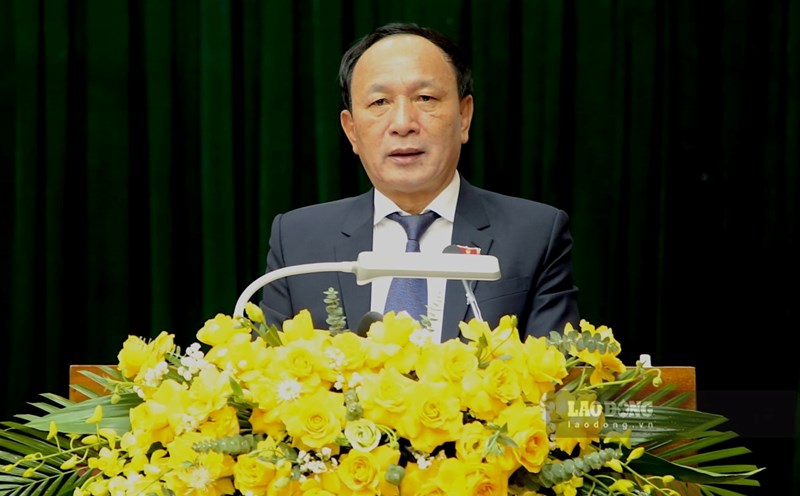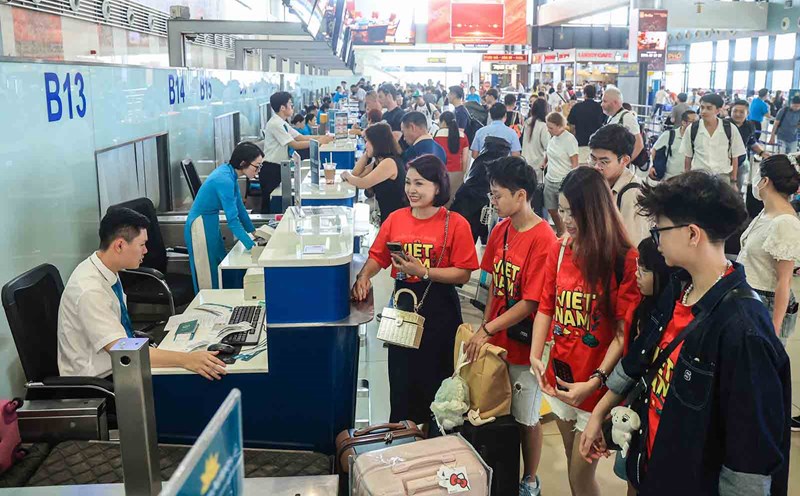Warm Tet in the new house
As Tet approaches, the weather in Dakrong district is cold and rainy, but Mr. Ho Van Tua's family (Dong Dong village, Mo O commune, Dakrong district, Quang Tri province) is cozy in their new house. Mr. Tua said that just a few months ago, his whole family lived in a dilapidated wooden stilt house. When it rained, it leaked, when it was sunny, it was hot, and when it was windy and stormy, they were worried that it would collapse.
Knowing the condition of the house, he planned to rebuild it many times, but his family's circumstances were difficult, so he did not have money to buy materials, so he had to live there temporarily from year to year.
Knowing Mr. Tua's situation, the Dakrong District People's Committee has planned to support the family in building a house. From 40 million VND from the central budget and 50 million VND from the Ministry of Public Security, the units have coordinated to build a house worth 90 million VND according to the Ministry of Public Security's 36B prefabricated house model.
The house was completed with the “3 hard” house standard, including hard foundation, hard frame-wall, hard roof and “2 stabilities” which are stable land, stable residence. Mr. Tua’s family is an ethnic minority, so to conform to their customs and practices, the design was adjusted.
"The house was assembled very quickly, now the whole family has a stable place to live, no need to worry about the sun or rain anymore, just worry about farming to escape poverty" - Mr. Ho Van Tua said.
In addition to Mr. Tua's family, on this occasion, 149 more families in difficult circumstances, mainly ethnic minorities in Dakrong district, were given new houses, each worth 90 million VND. The new houses were handed over to households before the Lunar New Year of At Ty 2025, helping every family have a stable and warm place to live before the New Year.
Social mobilization
Dakrong district is the most difficult locality in Quang Tri province, the total number of households in need of housing under the National Target Program (NTP) for sustainable poverty reduction and the NTP for socio-economic development in ethnic minority and mountainous areas is 2,148 households.
The total capital needed to implement is more than 193.1 billion VND, but the capital from the central budget and local budget is only more than 87 billion VND.
Mr. Le Dai Loi - Vice Chairman of Dakrong District People's Committee said that up to now, 1,486/1,827 households have been newly built houses and 251/321 households have been repaired. While the central and local budgets are limited, Dakrong District People's Committee must mobilize other legal sources of capital to achieve the set goals.
In Quang Tri, the need to eliminate temporary and dilapidated housing in the coming time is 8,824 households, of which 4,419 new houses will be built and 4,405 houses will be repaired. By August 2025, Quang Tri strives to complete 2,880 more houses, bringing the total number of houses for poor households completed in the 2022 - 2025 period to 4,470 houses, exceeding the target registered with the central government of 4,200 houses.
Mr. Hoang Nam - Vice Chairman of Quang Tri Provincial People's Committee - said that to implement the program of eliminating temporary and dilapidated houses in the province, the Provincial People's Committee advised the Provincial Party Committee to issue a decision to establish a Steering Committee for eliminating temporary and dilapidated houses in Quang Tri province; issued a plan to implement the program and many documents directing departments, branches and localities to organize the implementation.
In particular, Quang Tri province innovates methods and approaches in the direction of diversifying resources, including resources supported by the central and local governments, mobilized resources and efforts, and assistance from the grassroots community in the spirit of "whoever has something helps, whoever has merit helps merit, whoever has property helps property, whoever has little helps little, whoever has much helps much" and resources from the households themselves.













